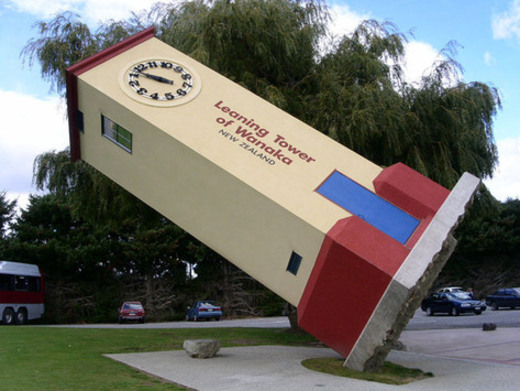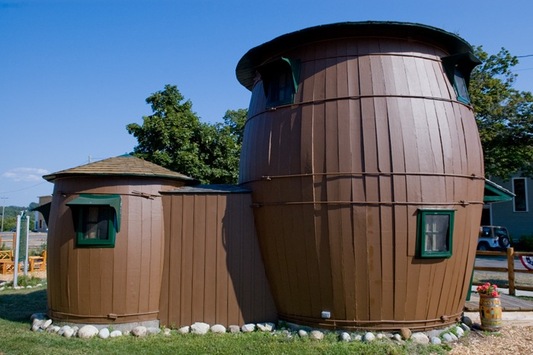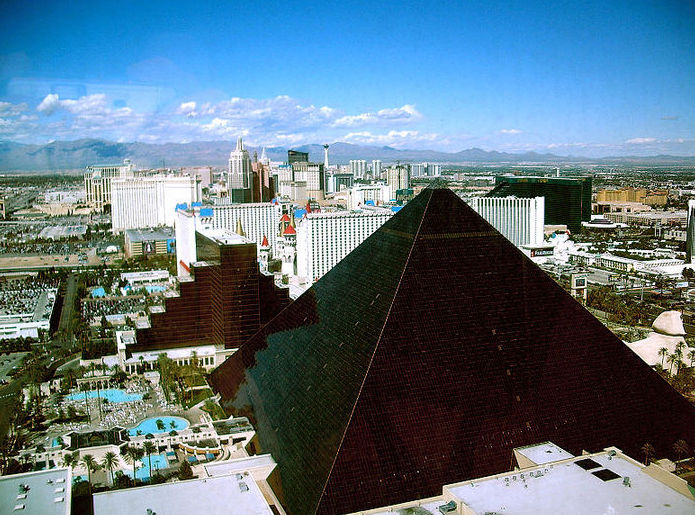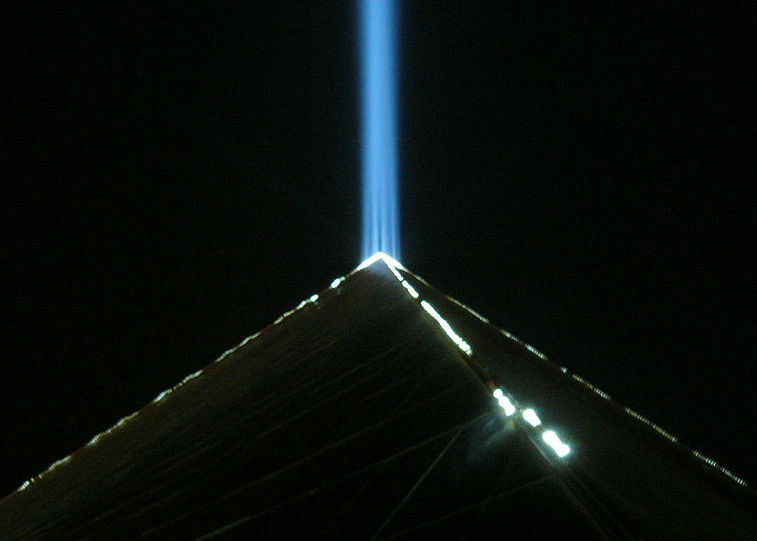WANAKA, NEW ZEALAND
Stuart Landsboroughâs Puzzling World is a tourist attraction near Wanaka, New Zealand. It started out as just a maze in 1973, but over the years expanded to accommodate a puzzling caf where guests could try out several puzzles, rooms with optical illusions, the and other things. One of the biggest attractions is the leaning tower. The Leaning Tower of Wanaka is, as the name implies, a tower that is seemingly impossibly balanced on one corner, making the whole structure lean at an angle of 53 degrees to the ground. Exactly how this is achieved is yet to be unveiled, but it can be assumed that some kind of counterbalance or anchoring device has been used.
 |
 |
GRAND MARAIS, MICHIGAN USA
The Pickle Barrel House was constructed in 1926 by the Pioneer Cooperage Company of Chicago. The two-story section is an actual barrel standing 16 feet tall. It was built to be a summer cottage for William and Mary Donahey. William was the author/illustrator of the "Teenie Weenie" comic strip that centered around two-inch-tall people who lived under a rosebush. In addition to the comic strip, Donahey created a number of advertisements for Monarch Foods Company. One featured a small pickle keg that was used as a house by some of the Teenie Weenies. Monarch had the house built as a surprise for the Donaheys. The Pickle Barrel house was moved to Grand Marais in 1936. Over the years it served as an ice-cream stand, an information booth and a gift shop, but it gradually fell into disrepair. The Grand Marais Historical Society acquired the property in 2003 and undertook a complete renovation of the structures. Photos of this remarkable rehabilitation effort can be seen here. The newly renovated Pickle Barrel House was opened to the public on July 3, 2005. An exhibit about the Donaheys' art occupies the main room, and the other rooms have been refurbished in the style of the 1920's.
 |
LAS VEGAS, NEVADA USA
The Luxor is among the most recognizable hotels on the strip because of its striking design. Designed by hotel architect Veldon Simpson, the main portion of the hotel is a 350-foot (110 m)-high, 30-story pyramid of black glass (in comparison, the Great Pyramid of Giza with original capstone topped out at 481 ft). The footprint of the pyramid is a 556-foot square. The hotel is marked by a large obelisk with the name of the property in lighted letters, while the porte-cochere travels underneath a massive recreation of the Great Sphinx of Giza. The pyramid was originally conceived with a tram connecting the north side of the hotel with the neighboring Excalibur Hotel and Casino. This was soon removed for later property changes. A second tram linkage now connects the east-facing porte-cochere with both the Excalibur and Mandalay Hotel and Casino. The pyramid is clad in very dark bronze glass, which appears black on clear days and a dark, golden-bronze on overcast days. There are 30 guest-room floors, six higher service floors (including the Sky Beam penthouses) and a large sublevel. Many of the original aesthetics of the external property have been eliminated. The original front water and laser show was the first to succumb. The laser show was stopped due to complaints of stray beams illuminating aircraft on approach to the very nearby international airport. The fountains themselves were removed and replaced by a parking lot and the new tram station. The tram station and tracks hinder the views of the pyramid tower from the strip. The pyramid tower is also rather lost to view as it has been surrounded by the large East/West Towers, the two Mandalay Bay towers and the large auditorium on the SW side.
The tip of the pyramid contains a fixed-position spotlight that points directly upward and is claimed to be the brightest beam in the world at over 42 billion candle power. It is visible from anywhere in the Las Vegas valley at night, and can be seen at flight level from above Los Angeles, California, over 275 miles (440 km) away. At ground level, on clear nights, the beam could also be seen as far south as Laughlin and even as far north as Mesquite or Beatty. The beam is visible straight ahead when driving northbound on US 93 in Arizona, north of Kingman before reaching Hoover Dam. In the spring, the bright light attracts huge numbers of moths into the light beam, creating a phenomenon that has been likened to snow. Light is generated using 45 Xenon arc lamps of 7 kilowatts each. When turned on, the lamps heat up to over 800 degrees Fahrenheit. The hourly cost, including lamps, electricity, and repairs, is US $51 roughly two weeks' worth of electricity for the average American household. Hotel engineers, as well as the hotel's own website also claim that the light can be observed from space. >
 |
 |